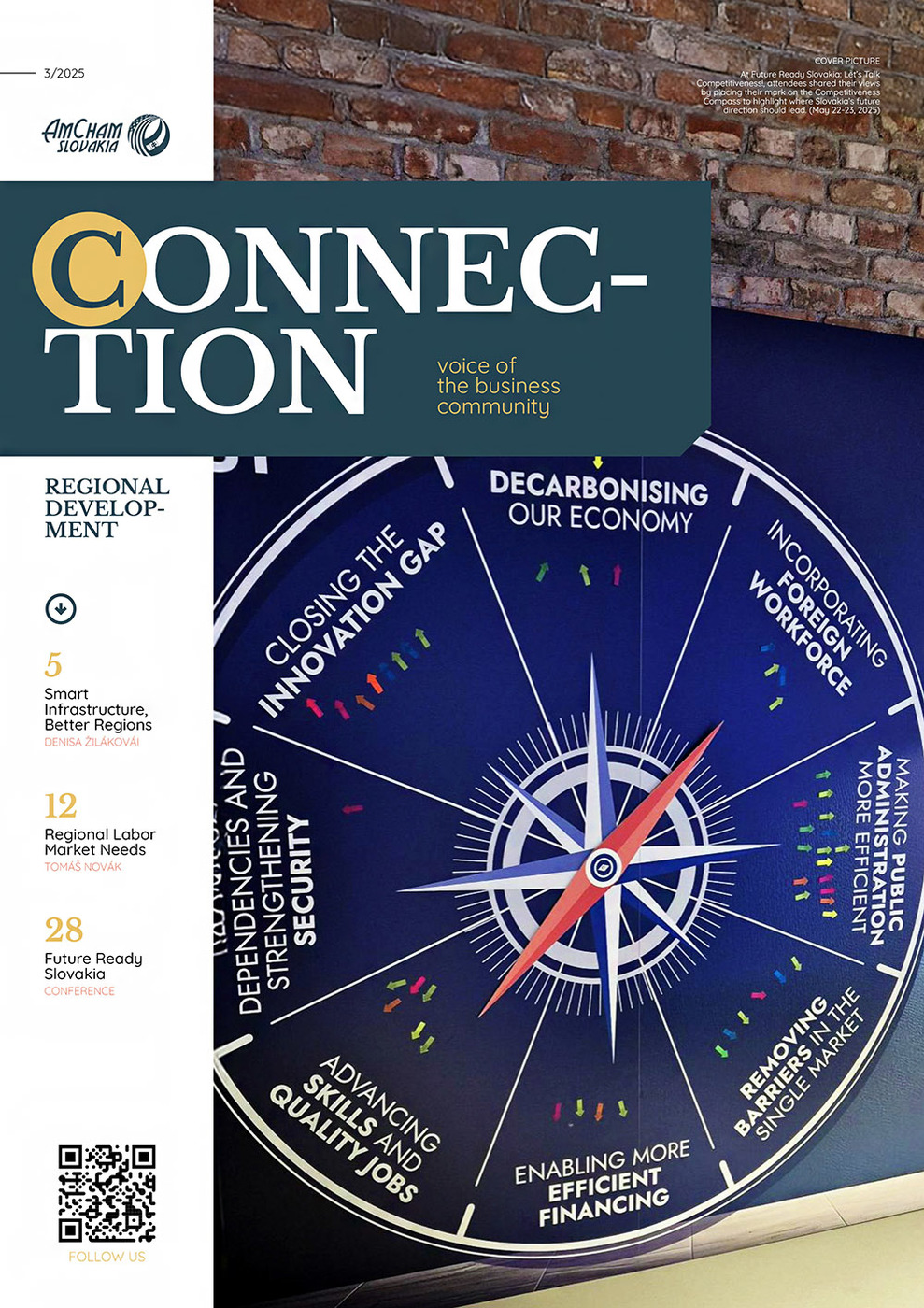The Net Employment Outlook (NEO) - the difference between the expected increase and decrease in employee numbers - stands at 12% for Slovakia in Q2 of this year.1 This forecast is based on a survey conducted by Manpower Group, which included over 500 employers. Despite a slight year-over-year decline of 2%, the result appears positive, reflecting employers’ ongoing willingness and capacity to expand their workforce.
But is the situation truly as favorable as it seems? What are the key labor market needs across our regions, and what obstacles prevent employers from achieving greater effectiveness?
Less bureaucracy, more digitalization
According to the latest Bureaucratic Index of 2024, published by the Institute of Economic and Social Analyses (INESS), Slovakia ranks last among surveyed countries in terms of bureaucratic burden. Small and medium-sized enterprises spend an average of 272 hours annually on administrative tasks, which corresponds to approximately 34 working days per year.2
Large corporations serve as both a model and an inspiration for improving efficiency as they progressively implement their own digital solutions, transforming paper-based, time-consuming processes into streamlined online workflows. These digital tools not only alleviate the manual, repetitive nature of administrative duties but also enable companies to utilize their resources (particularly human capital) much more effectively.
Enhanced cooperation between the public sector and private enterprises, along with the strategic use of knowledge and digital skills, represents a key area for improvement that could significantly benefit regional labor markets. The digitalization of the labor market involves not only the introduction of innovative solutions but also the gradual transition of all stakeholders—employers and job seekers alike—into a modern online environment. This transition inherently increases their knowledge, qualifications, and readiness to meet the demands of contemporary job positions.
A good job starts with a good schooling system
Regional labor markets face a persistent shortage of qualified workers in many industries. One of the root causes is an education system that is misaligned with economic demands and fails to reflect regional specifications adequately.
The Organization for Economic Cooperation and Development (OECD) warns policymakers at all levels about unresolved challenges in creating effective financial and regulatory frameworks, as well as the need to strengthen cooperation between educational institutions and employers.
I like the saying that thorough preparation is half of the success. Applied to this context, it means that the better the education and skills acquired during studies, the greater the potential for a good job and successful career.
Therefore, education at secondary and university levels should also shift partially from a generalized approach to one that is tailored specifically to the needs of the labor market in each region, enabling graduates to apply their skills immediately upon completing their studies. Large companies operating within regions are equipped with many qualified experts who can contribute significantly to expanding students’ knowledge beyond theory, providing practical experience in advance before they get a real job.
Currently, some structured collaboration programs exist between selected schools and employers, and these should be gradually expanded, customized to meet the specific needs of the regional labor market, and continuously improved.
Trends Today, Impacts Tomorrow: Shaping the Future Workforce
The world is changing at an extraordinary pace, and the labor market, also at the regional level, is no exception. How well we prepare today for the trends that are actively shaping the labor market will determine how successfully we respond to the expectations of future employees and the evolving capabilities of employers over the next 5, 10, or 15 years.
- The “Back to Office” Trend - In recent years, we’ve experienced nearly every possible model of workplace organization. Currently, the so-called hybrid model is proving to be the most effective, as it strikes a balance between the needs of employees and employers. However, not all employers are fully prepared to adopt this model, and significant gaps remain in terms of legislative clarity. While there will always be roles that require physical presence, the way organizations manage flexibility will significantly influence their attractiveness to job seekers in the years ahead.
- Generation Z: The Future Workforce - Young professionals from Generation Z see the world differently than previous generations. They value employers who prioritize well-being, provide a transparent path for career advancement, and offer financial stability. Employers who clearly communicate these opportunities and actively support young workers in their growth will see reduced turnover and greater long-term loyalty.
- Lifelong Learning as a Mindset - In today’s world, education does not end with graduation. It should become a continuous, lifelong journey. Many of the jobs created today involve new fields, technologies, and skill sets that didn’t exist just a few years ago. This trend will only accelerate. Promoting lifelong learning should be a shared goal of both employers and regional public institutions, as it is essential to maintaining a resilient and adaptive workforce.
Described needs of labor markets valid for all regions represent only a sample of the many areas with possible improvement. In conclusion, one clear insight emerges: any sustainable, long-term progress requires close cooperation between the public and private sectors - both strategically and operationally. These sectors must work in unison and support one another if we want to ensure that the evolving needs of regional labor markets are truly met.
***
1. ManpowerGroup Employment Outlook Survey
2. Bureaucracy Index 2024 INESS
Tomáš Novák, Head of Projects & Services, Deutsche Telekom IT Solutions Slovakia



Follow us